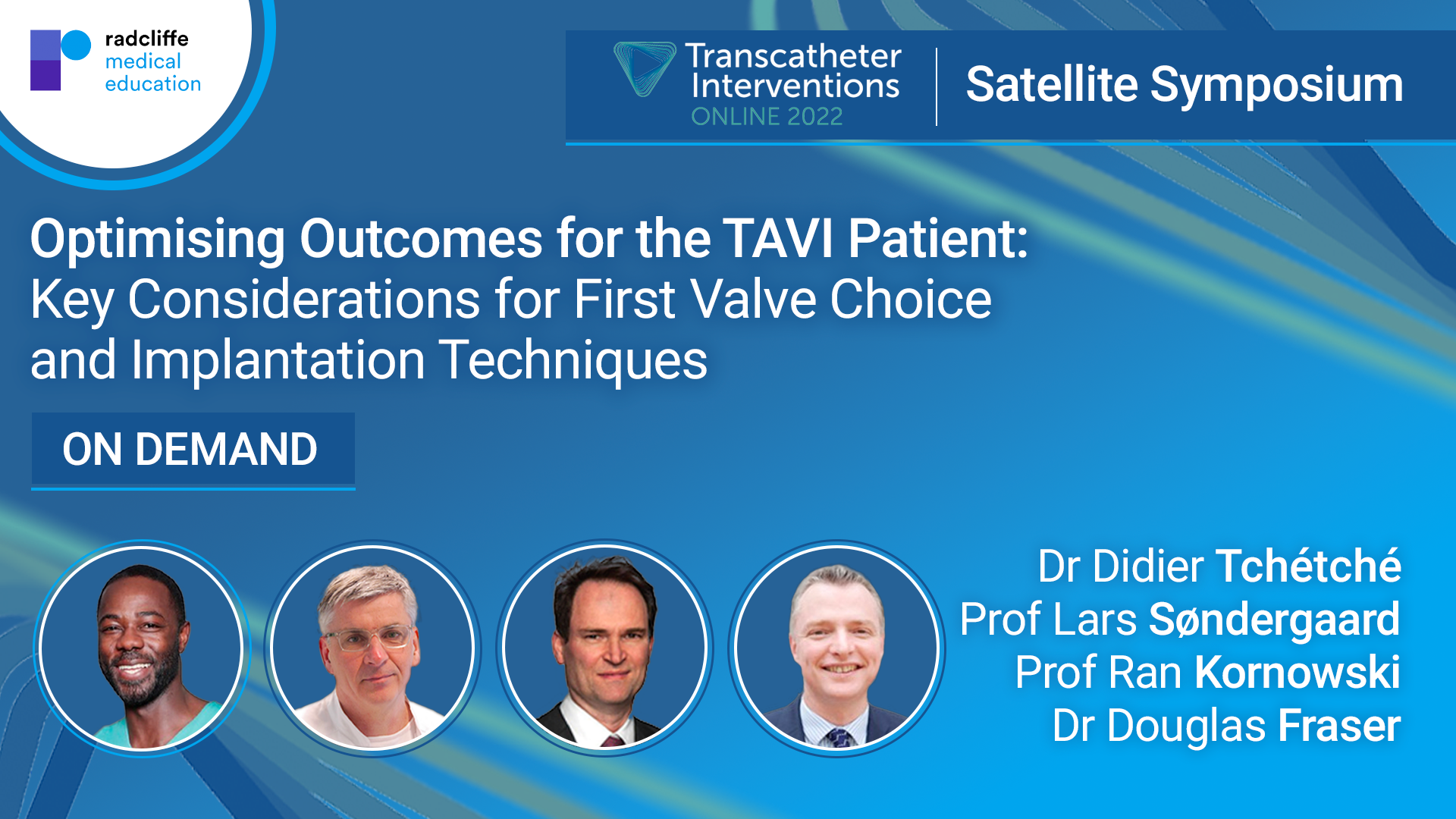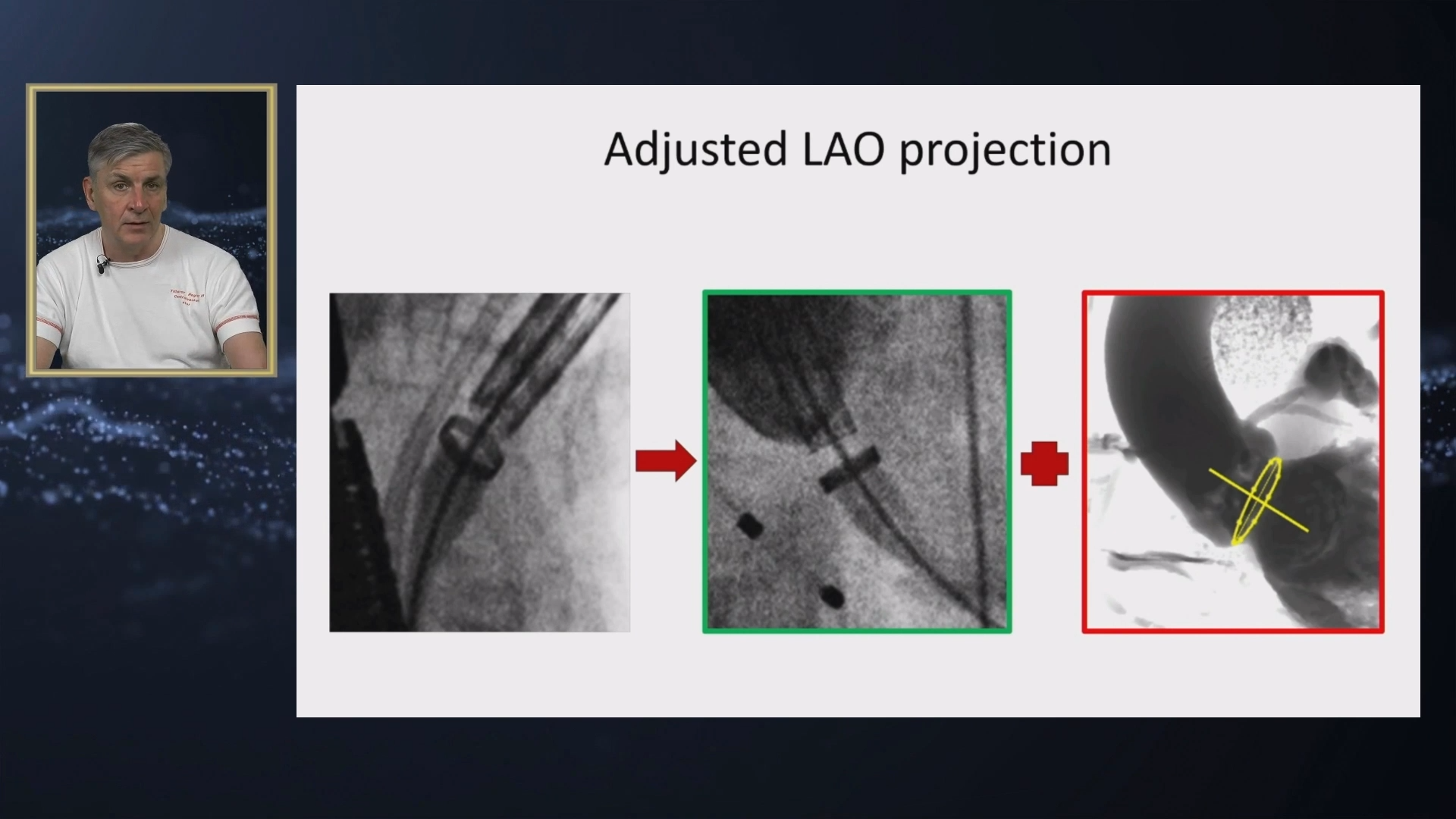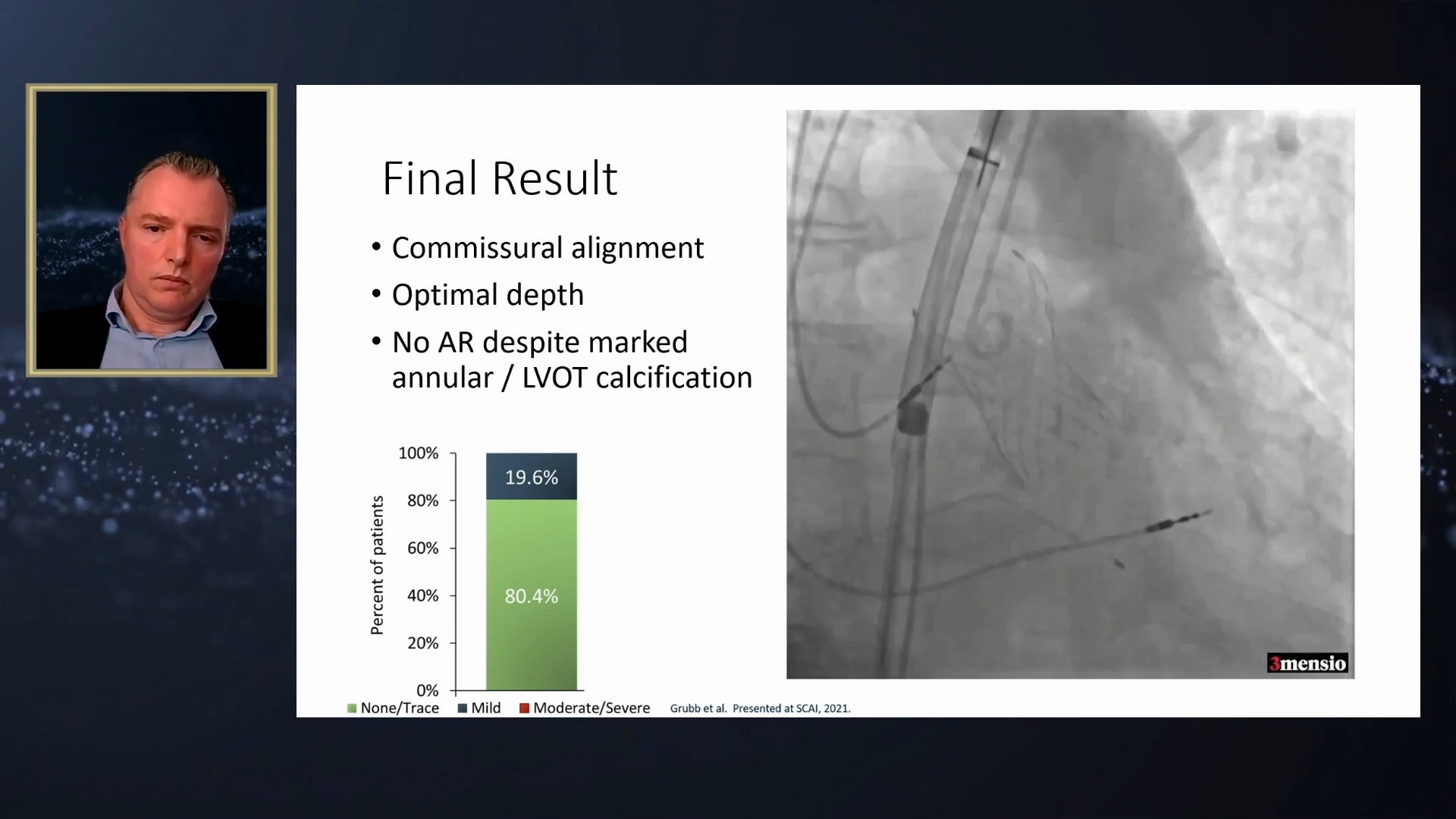Optimising Outcomes for the TAVI Patient: Key Considerations for First Valve Choice and Implantation Techniques
Published: 11 April 2022
-
Views:
 4732
4732
-
Likes:
 7
7
-
Views:
 4732
4732
-
Likes:
 7
7
-
 16m 48sPart 1 Considerations for First Valve Choice Didier Tchétché, Douglas G Fraser, Ran Kornowski, Lars Søndergaard
16m 48sPart 1 Considerations for First Valve Choice Didier Tchétché, Douglas G Fraser, Ran Kornowski, Lars Søndergaard
Overview
In this symposium, part of Transcatheter Interventions Online 2022, we review latest data showing why durability and hemodynamics matter for initial valve selection and discuss the latest techniques to help achieve optimal outcomes for patients with longer life expectancy.
Join this expert faculty for a combination of highly informative technical presentations and patient case studies.
Key Learning Objectives
- Recall the latest data showing why durability and hemodynamics matter for initial valve selection.
- Discuss the latest techniques to help achieve optimal outcomes for patients with longer life expectancy.
Target Audience
- Interventional Cardiologists
- Surgeons with an interest in transcatheter treatment strategies for coronary and structural heart disease
- Interventional Cardiology Nurses
More from this programme
Part 1
Considerations for First Valve Choice
Part 2
Optimised Approaches for First Valve Choice
Part 3
Tips and Tricks for Achieving Procedure Efficiencies
Faculty Biographies

Lars Søndergaard
Professor Lars Søndergaard is a consultant cardiologist at Rigshospitalet – Copenhagen, Denmark. Professor of Cardiology at University of Copenhagen, he published over 300 peer reviewed articles, and more than 15 textbook chapters. His research interests are focused on adults with congenital heart diseases and catheter-based heart valve interventions, as well as congenital and structural heart diseases. He led the first-in-human transcatheter mitral valve implantation (CardiAQ) in 2012 and he actively participated to several trials, including NOTION (transcatheter vs. surgical aortic valve replacement in patients with aortic stenosis and low surgical risk), and the REDUCE randomised trial (PFO vs anti-platelet therapy after cryptogenic stroke).







